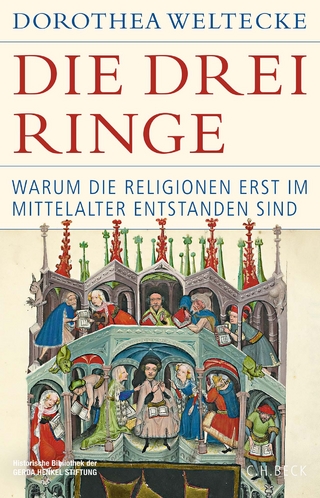
Peasant Fires
The Drummer of Niklashausen
Seiten
1992
Indiana University Press (Verlag)
978-0-253-36725-9 (ISBN)
Indiana University Press (Verlag)
978-0-253-36725-9 (ISBN)
- Titel erscheint in neuer Auflage
- Artikel merken
One night in 1476 in the small southern German town of Niklashausen, an illiterate shepherd and street musician by the name of Hans Behem had a vision of the Virgin Mary. This work sets the pieces of the story into their cultural, religious, and political context. It explores important questions about the period and about historical memory.
"A gem of a book...It has a plot, good guys and bad guys, it opens up a 'strange' world, and it is exceptionally well written. This is the first time that I have seen anywhere this story told with as much sensitivity and care for the world of the peasant and its religious culture" - Thomas W. Robisheaux. One night in 1476 in the small southern German town of Niklashausen, an illiterate shepherd and street musician by the name of Hans Behem had a vision of the Virgin Mary. The Virgin told him to burn his drum in a bonfire of the vanities and preach at the village church the virtues of a life of poverty and devotion to God. In a short time, great crowds of peasants and common folk from all over Germany were coming to hear 'The Drummer' preach, and Niklashausen became the object of a massive pilgrimage. His sermons became more and more radical; the authorities were alarmed. In the middle of the night, Hans was arrested by knights of the local bishop and imprisoned in the bishop's fortress. About twelve thousand of his followers tried to free him, but they were quickly repulsed by cannon fire and knights on horseback. Hans was burned at the stake.
This incident has become emblematic of the conflicts between the wealthy rulers - church and state - and the peasants and common people of medieval Europe and has been presented as a precursor of the massive peasant revolts of the next century. Richard Wunderli sets the pieces of the story that are known to historians into their cultural, religious, and political context. He explores important questions about the period and about historical memory that will interest both the general reader and students of the period.
"A gem of a book...It has a plot, good guys and bad guys, it opens up a 'strange' world, and it is exceptionally well written. This is the first time that I have seen anywhere this story told with as much sensitivity and care for the world of the peasant and its religious culture" - Thomas W. Robisheaux. One night in 1476 in the small southern German town of Niklashausen, an illiterate shepherd and street musician by the name of Hans Behem had a vision of the Virgin Mary. The Virgin told him to burn his drum in a bonfire of the vanities and preach at the village church the virtues of a life of poverty and devotion to God. In a short time, great crowds of peasants and common folk from all over Germany were coming to hear 'The Drummer' preach, and Niklashausen became the object of a massive pilgrimage. His sermons became more and more radical; the authorities were alarmed. In the middle of the night, Hans was arrested by knights of the local bishop and imprisoned in the bishop's fortress. About twelve thousand of his followers tried to free him, but they were quickly repulsed by cannon fire and knights on horseback. Hans was burned at the stake.
This incident has become emblematic of the conflicts between the wealthy rulers - church and state - and the peasants and common people of medieval Europe and has been presented as a precursor of the massive peasant revolts of the next century. Richard Wunderli sets the pieces of the story that are known to historians into their cultural, religious, and political context. He explores important questions about the period and about historical memory that will interest both the general reader and students of the period.
AuthorOs Note I Enchanted Time II Carnival III Lent IV Walpurgisnacht V The Feast of Corpus Christi VI The Feast of the Visitation of Mary VII The Feast of St. Margaret VIII Historical Time Bibliography
| Erscheint lt. Verlag | 1.11.1992 |
|---|---|
| Zusatzinfo | b&w photograph |
| Verlagsort | Bloomington, IN |
| Sprache | englisch |
| Maße | 140 x 210 mm |
| Gewicht | 500 g |
| Themenwelt | Geisteswissenschaften ► Geschichte ► Regional- / Ländergeschichte |
| Geschichte ► Teilgebiete der Geschichte ► Religionsgeschichte | |
| Religion / Theologie ► Christentum ► Kirchengeschichte | |
| ISBN-10 | 0-253-36725-5 / 0253367255 |
| ISBN-13 | 978-0-253-36725-9 / 9780253367259 |
| Zustand | Neuware |
| Haben Sie eine Frage zum Produkt? |
Mehr entdecken
aus dem Bereich
aus dem Bereich
Herkunft, Blüte, Weg nach Osten
Buch | Hardcover (2024)
C.H.Beck (Verlag)
CHF 55,90
Von den Anfängen bis zur Gegenwart
Buch | Hardcover (2022)
C.H.Beck (Verlag)
CHF 47,60
warum die Religionen erst im Mittelalter entstanden sind
Buch | Hardcover (2024)
C.H.Beck (Verlag)
CHF 53,20


